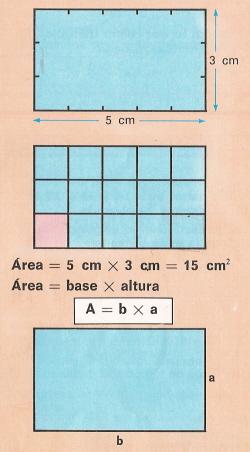
Area of parallelogram and triangles |

1. Area of Rectangle
The upper rectangle is 5 cm width and 3 cm height. How many cm2 is it? Count the squares of a cm2. We obtain 15 cm2.
Area = 5 cm x 3 cm = 15 cm2. Area = width x height; A = b x a.
The area of the rectangle is given by multiplying the width times the height.
The height of the rectangle is equal to the area divided by the width.
The width of the rectangle is equal to the area divided by the height.
Solve these problems on a paper and answer in cm2 or cm: